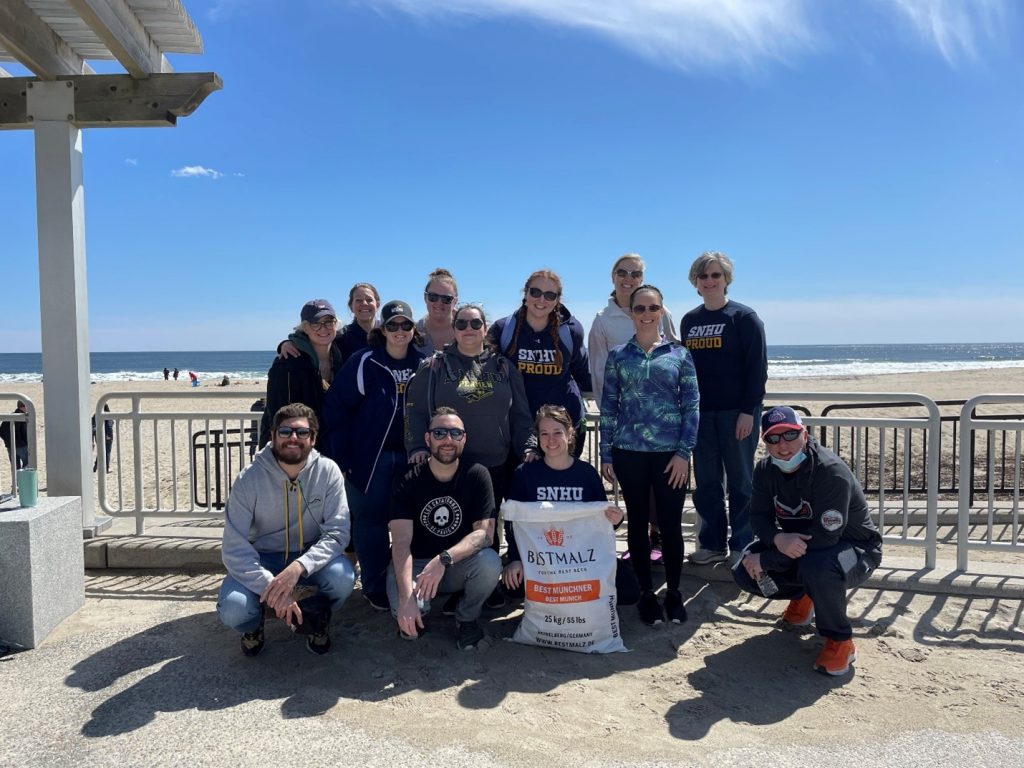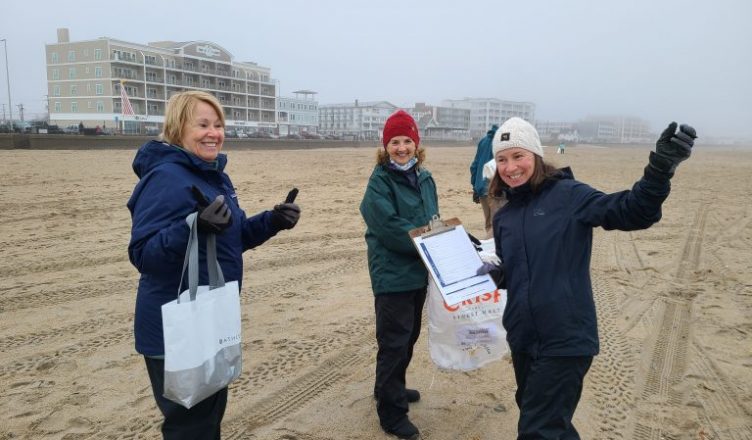Join us for our monthly beach cleanup at Hampton Beach! These cleanups will be on the first Saturday of every month at Hampton Beach from 10:00 am to 12:00 pm, except for January, when we will hold the cleanup on New Year’s Day, January 1.
Registration is required – click here to register. These cleanups are fun for all ages, and we hope you can join us!
Saturday, December 2, join us at our Blue Ocean Discovery Center (180 Ocean Blvd) for a pop-up holiday shop featuring eco-friendly gifts such as whale adoptions and Blue Ocean Society apparel!
Public Beach Cleanup Details
- We will meet at the Seashell Stage at 10:00 am
- We collect data at all beach cleanups, which contributes to our marine debris research.
- Please bring gloves. Gardening gloves, thin winter gloves, and outdoor work gloves all work well. We aim to avoid disposable plastic gloves to limit our contributions to pollution from single-use plastic products.
- We recommend wearing layers and comfortable shoes. The temperature on the coast can be 10-15 degrees cooler than inland.
- Please register for the cleanup so we can have enough supplies for everyone.

Brief History of our Beach Cleanups
We’ve been conducting beach cleanups at Blue Ocean since 2001 and have collected over 195,000 pounds of debris from local beaches around the seacoast area. At the end of every season, we compile all our data and make a fact sheet that includes the total weight and number of debris items, top items collected, pounds of trash per town, and more. In 2022, we conducted 510 cleanups with the help of 3,444 volunteers! Over 175,000 items were collected and tallied, weighing in at 6,779 pounds.
Why Are Beach Cleanups Important?
Even with carry-in, carry-out regulations and garbage bins near the beach, trash still makes its way to the beach. Trash can make its way to the beach from littering, or it may be carried by wind and rain. One study estimated that there will be more plastic in the ocean than fish by 2050. That is a crazy statistic if it becomes true! One 2014 study estimated that a minimum of 5.25 trillion pieces of debris, weighing 268,940 tons, are floating in the ocean. Surprisingly, in that same study, 75.4% of those 5.25 trillion pieces are considered macroplastics (>200 mm), whereas 13.2% fit into the microplastic category (0.33–4.75 mm.).
Impacts of Litter on Marine Life
Fish and other marine organisms can ingest these plastics, which may be fatal. Even though they are small, microplastics can have impacts. Plastics can bioaccumulate within the animal, with chemicals building up over time, causing harm. By cleaning up the beach, you’re protecting marine life from the harmful impacts of litter.
Click below to sign up now and join us on the beach this winter!






